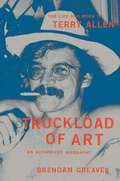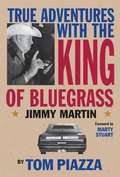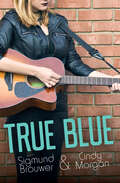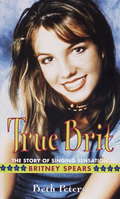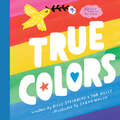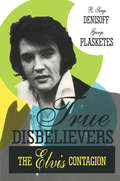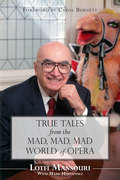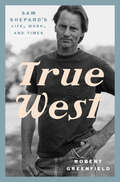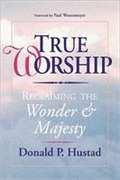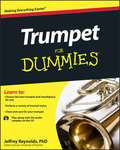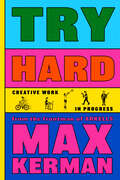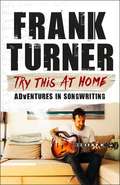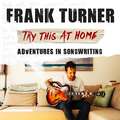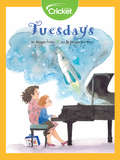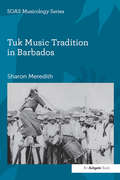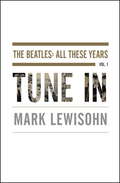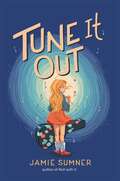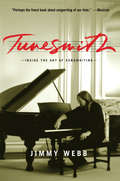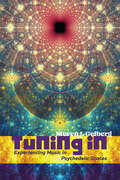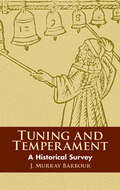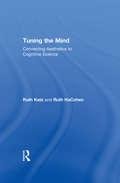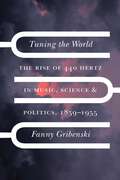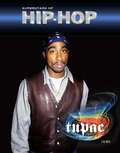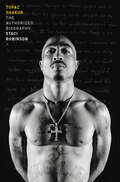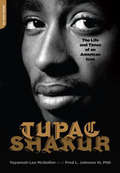- Table View
- List View
Truckload of Art: The Life and Work of Terry Allen—An Authorized Biography
by Brendan GreavesThe definitive, authorized, and first-ever biography of Terry Allen, the internationally acclaimed visual artist and iconoclastic songwriter who occupies an utterly unique position straddling the disparate, and usually distant, worlds of conceptual art and country music. &“People tell me it&’s country music,&” Terry Allen has joked, &“and I ask, &‘Which country?&’&” For nearly sixty years, Allen&’s inimitable art has explored the borderlands of memory, crossing boundaries between disciplines and audiences by conjuring indelible stories out of the howling West Texas wind. In Truckload of Art, author Brendan Greaves exhaustively traces the influences that shaped Allen&’s extraordinary life, from his childhood in Lubbock, Texas, spent ringside and sidestage at the wrestling matches and concerts his father promoted, to his formative art-school years in incendiary 1960s Los Angeles, and through subsequent decades doggedly pursuing his uncompromising artistic vision. With humor and critical acumen, Greaves deftly recounts how Allen built a career and cult following with pioneering independent records like Lubbock (on everything) (1979)—widely considered an archetype of alternative country—and multiyear, multimedia bodies of richly narrative, interconnected art and theatrical works, including JUAREZ (ongoing since 1968), hailed as among the most significant statements in the history of American vernacular music and conceptual art. Drawing on hundreds of revealing interviews with Allen himself, his family members, and his many notable friends, colleagues, and collaborators—from musicians like David Byrne and Kurt Vile to artists such as Bruce Nauman and Kiki Smith—and informed by unprecedented access to the artist&’s home, studio, journals, and archives, Greaves offers a poetic, deeply personal portrait of arguably the most singularly multivalent storyteller of the American West.
True Adventures With the King of Bluegrass
by Tom PiazzaPiazza found himself pitched headlong into a world he couldn't have anticipated. Martins mercurial personality drew the writer into a series of escalating encounters (with mean dogs, broken-down cars, and near electrocution), culminating in a harrowing and unforgettable expedition, with Martin, to the Grand Ole Opry. Piazza captured his visit with Martin in supple, electric prose, and the result, when it appeared in The Oxford American, quickly became a word-of-mouth sensation among musicians and fans alike. Some explicit language.
True Blue (Orca Limelights)
by Sigmund Brouwer Cindy MorganTrue Blue continues the story that began in Billboard Express. Elle is on the road as an opening act for Johnny James, the biggest star in country music. Touring is everything she's ever dreamed of, but it has unexpected downsides: crazy fans, jealous backup singers, weird rules on the tour bus. But when something goes terribly wrong during a performance, Elle struggles to figure out how she can make things right with her fans, her father, her record company and with her friend Webb. This short novel is a high-interest, low-reading level book for middle-grade readers who are building reading skills, want a quick read or say they don’t like to read! The epub edition of this title is fully accessible.
True Brit
by Beth PetersPOP PRINCESS Britney Spears is putting girls back on the map in the pop music world. With the effervescent and intoxicating sounds of her first album, . . . Baby One More Time, Britney shot straight to the top of the charts--in just the first week of the album's release. Her ripe style and smart lyrics have captured the hearts of millions of fans, young and old. But Britney didn't just come out of nowhere: she is a multitalented entertainment sensation who can't remember a time in her life when she wasn't singing, acting, or dancing. She broke into the biz at the tender age of eight, and it wasn't long before she made her mark. TRUE BRIT gives you all the backstage info, from her first audition for The New Mickey Mouse Club to her exciting decision to go solo. You'll also find out what it was like for Brit to work with the boys of 'N Sync, the rumors of romance, and her dazzling life beyond the stage. Britney is more than just a singer--she's a performing phenomenon. And TRUE BRIT is your ticket into her amazing world.
True Colors
by Tom Kelly Billy SteinbergBased on the hit song, this beautiful book is the perfect gift for anyone who needs to be reminded of the importance of being their true selves.Through reassuring lyrics that encourage us to be our true selves, "True Colors" has become a beloved song worldwide since its release in 1986. Now, for the first time ever, this inspiring and iconic song is in book form accompanied by gorgeous illustrations, and perfectly packaged with a ribbon enclosure.Ideal for any age--and as a gift anytime during the year--this book about having confidence in yourself is sure to be a huge comfort.
True Disbelievers: Elvis Contagion
by R. Serge Denisoff George PlasketesThe legion of fans who refuse to believe that Elvis Presley died August 16, 1977 has been a major force behind the ever-expanding, elusive, and enduring Elvis myth during the past seventeen years. This network of fervent true believers engages in activities that include a melange of sightings and conspiracy theories. Mass media coverage of these phenomena has evolved from the underground grass-roots level to widespread publicity with social, religious, commercial, and ideological underpinnings. In True Disbelievers, R. Serge Denisoff and George Plasketes examine the implications of various accounts and several perspectives on Elvis Presley's death and transfiguration.Denisoff and Plasketes also analyze the various media that those who doubt Elvis's death use to popularize their positions, including television, magazines, and books. They review the work of others who have written on the subject, such as Gail Brewer-Giorgio and Major Bill Smith, and raise provocative, yet valid questions about the phenomenon they describe. True Disbelievers takes a pointed look at the music industry as well, and how it has used and commercially benefitted by the continuing belief that Elvis lives. They examine common strands in the many reports of Elvis sightings since Presley's reported death. Denisoff and Plasketes describe the Elvis phenomenon in serious, objective as well as empathetic terms, placing it in the context of studies of cult figures and their followers. True Disbelievers contains a great deal of fascinating information about America's popular culture and the power and influence of the media in modern society. It will be of significant interest to communication studiesscholars,sociologists,professionals in the music and media industries, and those interested in popular culture.
True Tales from the Mad, Mad, Mad World of Opera
by Carol Burnett Lotfi Mansouri Mark HernandezAn insider’s view of the opera world from one of its greatest figures. Everything about opera is larger than life, but the bigger the art form, the bigger the potential for disaster. When things go wrong at the opera house, they really go wrong. No one has a greater or more intimate knowledge of such moments than Lotfi Mansouri. Over the course of a career that has spanned five decades, Mansouri has directed nearly 500 productions at major opera houses around the globe. Mansouri has gathered a collection of discrete vignettes that recount unforgettable and revealing moments at the opera as personally experienced or witnessed by him. From unbelievable snafus to unfortunate mishaps to astounding coincidences, these vignettes feature some of the biggest names in opera, as well as prominent figures from politics and more. From the hilarious to the bizarre, this is a reader-friendly look at what is often thought of as an overly serious, even mysterious form of art.
True West: Sam Shepard's Life, Work, and Times
by Robert GreenfieldA revelatory biography of the world-famous playwright and actor Sam Shepard, whose work was matched by his equally dramatic life, including collaborations with the Rolling Stones and Bob Dylan as well as tumultuous relationships with Patti Smith, Joni Mitchell, and Jessica Lange&“Robert Greenfield&’s vivid, clear-eyed biography captures both the man and the myth—and, perhaps most important, the writer, who sang a new kind of song in American theater.&”—Michael Schulman, author of Her Again: Becoming Meryl Streep True West: Sam Shepard&’s Life, Work, and Times is the story of an American icon, a lasting portrait of Sam Shepard as he really was, revealed by those who knew him best. This sweeping biography charts Shepard&’s long and complicated journey from a small town in Southern California to become an internationally known playwright and movie star. The only son of an alcoholic father, Shepard crafted a public persona as an authentic American archetype: the loner, the cowboy, the drifter, the stranger in a strange land. Despite his great critical and financial success, he seemed, like so many of his characters, to remain perpetually dispossessed.Much like Robert Greenfield&’s biographies of Jerry Garcia and Timothy Leary, this book delves deeply into Shepard&’s life as well as the ways in which his work illuminates it. True West takes readers through the world of downtown theater in Lower Manhattan in the early sixties; the jazz scene at New York&’s Village Gate; fringe theater in London in the seventies; Bob Dylan&’s legendary Rolling Thunder tour; the making of classic films like Zabriskie Point, Days of Heaven, and The Right Stuff; and Broadway productions of Buried Child, True West, and Fool for Love.For this definitive biography, Greenfield interviewed dozens of people who knew Shepard well, many of whom had never before spoken on the record about him. While exploring his relationships with Patti Smith, Bob Dylan, Joni Mitchell, and Jessica Lange across the long arc of his brilliant career, Greenfield makes the case for Shepard as not just a great American writer but a unique figure who first brought the sensibility of rock &’n&’ roll to theater.
True Worship: Reclaiming The Wonder And Majesty
by Donald P. HustadWorship is one of the most divisive issues in churches today. Donald Hustad responds to the cataclysmic changes in worship styles over the last fifty years, examining the biblical elements of worship and offering a model for richer, God-honoring services. This provocative book is must reading for all pastors, church music leaders and educators, worship committees, and all Christians interested in worship.
Trumpet For Dummies
by Jeffrey ReynoldsHow to get a good sound, read music, and master a variety of styles-including classical, pop, jazz, and Latin Listening to a trumpet trilla series of high notes during a military march or wail longingly during a blues rendition-is a pleasure second to none. And masters, including Wynton Marsalis and Louis Armstrong, have made the trumpet truly Gabriel's horn, one of the most eloquent voices in classical music and jazz. Yet even a virtuoso begins somewhere. This down-to-earth and user-friendly guide shows those new to the trumpet everything they need know to play the instrument-from basic technique (including getting a good sound), caring for a trumpet, and learning pieces from many musical genres. Demonstrates how to play classical, pop, jazz, and Latin-with audio samples on the enclosed CD-ROM Includes tips on how to buy or rent the best instrument An ideal guide for students just learning the trumpet, or students who need a little boost, or fans of the trumpet who've never got around to learning it, here is the complete guide to making one of the world's most popular-and beloved instruments-their own. Note: CD-ROM/DVD and other supplementary materials are not included as part of eBook file.
Try Hard: Creative Work in Progress
by Max KermanFunny, conversational, and relatable, Try Hard is for anyone looking to make sense of their own creative pursuit or bring more creativity into their life, offering a framework for how to do it and where to begin.Let&’s say you see a familiar musician from a globe-trotting, touring band hanging out at your local coffee shop, reading the newspaper and typing away on his laptop. This doesn&’t look like a musician at work. He seems approachable enough, so you ask him what exactly he does all day. With a grin on his face, he admits the job might not be what you think. So you take a seat, and ask him every question you&’ve ever had about how it all works: the nuts and bolts of writing a song, preparing for a show, marketing a band, and the day-to-day business of a creative life.With each answer—none of it about talent—you realize this musician is a bit of a…try hard. And the mystery of being a creative person isn&’t actually mysterious at all: it&’s just exploring ideas with an enthusiastic and determined curiosity. Over and over.Max is that musician in the coffee shop, and this is what reading Try Hard feels like: one-of-a-kind tales from a dynamic frontman, and a companion to your own creative work in progress. With a brick-by-brick attitude, Max explores his own growth in the craft of storytelling and performance, the pleasure to be found in collaboration, and the creative spirit required in sharing your art.
Try This At Home: THE SUNDAY TIMES BESTSELLER
by Frank Turner*THE SUNDAY TIMES BESTSELLER*The brand new memoir from the Sunday Times bestselling author of The Road Beneath My Feet. Taking 36 songs from his back catalogue, folk-punk icon Frank Turner explores his songwriting process. Find out the stories behind the songs forged in the hedonistic years of the mid-2000s North London scene, the ones perfected in Nashville studios, and everything in between. Some of these songs arrive fully-formed, as if they've always been there, some take graft and endless reworking to find 'the one'. In exploring them all, Turner reflects with eloquence, insight and self-deprecating wit on exactly what it is to be a songwriter. From love songs and break-up songs to political calls-to-arms; songs composed alone in a hotel room or in soundcheck with the Sleeping Souls, this brilliantly written memoir - featuring exclusive photos of handwritten lyrics and more - is a must-have book for FT fans and anyone curious about how to write music.
Try This At Home: THE SUNDAY TIMES BESTSELLER
by Frank TurnerThe brand new memoir from the Sunday Times bestselling author of The Road Beneath My Feet. Taking 36 songs from his back catalogue, folk-punk icon Frank Turner explores his songwriting process. Find out the stories behind the songs forged in the hedonistic years of the mid-2000s North London scene, the ones perfected in Nashville studios, and everything in between. Some of these songs arrive fully-formed, as if they've always been there, some take graft and endless reworking to find 'the one'. In exploring them all, Turner reflects with eloquence, insight and self-deprecating wit on exactly what it is to be a songwriter. From love songs and break-up songs to political calls-to-arms; songs composed alone in a hotel room or in soundcheck with the Sleeping Souls, this brilliantly written memoir is a must-have book for FT fans and anyone curious about how to write music.(P)2019 Headline Publishing Group Ltd
Tuesdays
by Rhonda TelferFinn is reluctant to go to piano lessons, but when Miss Bea shows him how the instrument works, he begins to discover the magic of music.
Tuk Music Tradition in Barbados (SOAS Musicology Series)
by Sharon MeredithBarbados is a small Caribbean island better known as a tourist destination rather than for its culture. The island was first claimed in 1627 for the English King and remained a British colony until independence was gained in 1966. This firmly entrenched British culture in the Barbadian way of life, although most of the population are descended from enslaved Africans taken to Barbados to work on the sugar plantations. After independence, an official desire to promulgate the country’s African heritage led to the revival and recontextualisation of cultural traditions. Barbadian tuk music, a type of fife and drum music, has been transformed in the post-independence period from a working class music associated with plantations and rum shops to a signifier of national culture, played at official functions and showcased to tourists. Based on ethnographic and archival research, Sharon Meredith considers the social, political and cultural developments in Barbados that led to the evolution, development and revival of tuk as well as cultural traditions associated with it. She places tuk in the context of other music in the country, and examines similar musics elsewhere that, whilst sharing some elements with tuk, have their own individual identities.
Tune In
by Mark LewisohnTune In is the first volume of All These Years--a highly-anticipated, groundbreaking biographical trilogy by the world's leading Beatles historian. Mark Lewisohn uses his unprecedented archival access and hundreds of new interviews to construct the full story of the lives and work of John Lennon, Paul McCartney, George Harrison, and Ringo Starr. Ten years in the making, Tune In takes the Beatles from before their childhoods through the final hour of 1962--when, with breakthrough success just days away, they stand on the cusp of a whole new kind of fame and celebrity. They've one hit record ("Love Me Do") behind them and the next ("Please Please Me") primed for release, their first album session is booked, and America is clear on the horizon. This is the lesser-known Beatles story--the pre-Fab years of Liverpool and Hamburg--and in many respects the most absorbing and incredible period of them all. Here is the complete and true account of their family lives, childhoods, teenage years and their infatuation with American music, here is the riveting narrative of their unforgettable days and nights in the Cavern Club, their laughs, larks and adventures when they could move about freely, before fame closed in. For those who've never read a Beatles book before, this is the place to discover the young men behind the icons. For those who think they know John, Paul, George, and Ringo, it's time to press the Reset button and tune into the real story, the lasting word.From the Hardcover edition.
Tune It Out
by Jamie SumnerFrom the author of the acclaimed Roll with It comes a moving novel about a girl with a sensory processing disorder who has to find her own voice after her whole world turns upside down.Lou Montgomery has the voice of an angel, or so her mother tells her and anyone else who will listen. But Lou can only hear the fear in her own voice. She&’s never liked crowds or loud noises or even high fives; in fact, she&’s terrified of them, which makes her pretty sure there&’s something wrong with her. When Lou crashes their pickup on a dark and snowy road, child services separate the mother-daughter duo. Now she has to start all over again at a fancy private school far away from anything she&’s ever known. With help from an outgoing new friend, her aunt and uncle, and the school counselor, she begins to see things differently. A sensory processing disorder isn&’t something to be ashamed of, and music might just be the thing that saves Lou—and maybe her mom, too.
Tunesmith: Inside the Art of Songwriting
by Jimmy WebbWebb brings his insider's knowledge, experience, and star power to the ultimate guide for aspiring songwriters. With a combination of anecdotes, meditation, and advice, he breaks down the creative process from beginning to end--from coping with writer's block, to song construction, chords, and even self-promotion. Webb also gives readers a glimpse into the professional music world.
Tuning In: Experiencing Music in Psychedelic States
by Steven J. GelbergThe first authoritative study of the important role of music in psychedelic use and the ways in which psychedelics provide unprecedented access to the deeper mysteries of music.Tuning In is the first authoritative study of a subject that is of wide and growing importance within the current psychedelic renaissance: the role and experience of music in personal growth and healing via psychedelics. The book brings together the best insights and creative musings on the subject from respected figures within the psychedelic community. Going back several decades (and beyond), this book includes first-hand testimony from numerous "trip reports," along with relevant insights from psychologists, scientists, philosophers, scholars of religion, musicologists, musicians, and mystics. Tuning In takes an experiential approach to understanding the unique synergy between psychedelic states and music: how music profoundly supports and enhances psychedelic sessions while psychedelic states provide a unique doorway into the inner mysteries of music. Author Steven J. Gelberg includes helpful guidance in assessing and choosing music appropriate for psychedelic sessions, along with links to curated music playlists.
Tuning and Temperament: A Historical Survey
by J. Murray BarbourThe demands of tuning (attaining the perfect scale) and temperament (the compromises necessary for composing in every key) have challenged musicians from the earliest civilizations onward. This guide surveys these longstanding problems, devoting a chapter to each principal theory and offering a running account of the complete history of tuning and temperament. Organized chronologically, the book features a helpful glossary and numerous illustrative tables, and it requires minimal background in music theory. This new reissue is currently the only edition in print of a much-quoted classic. 9 figures. 180 tables.
Tuning the Mind: Connecting Aesthetics to Cognitive Science
by Ruth HaCohenStarting from the late Renaissance, efforts to make vocal music more expressive heightened the power of words, which, in turn, gave birth to the modern semantics of musical expression. As the skepticism of seventeenth-century science divorced the acoustic properties from the metaphysical qualities of music, the door was opened to dicern the rich links between musical perception and varied mental faculties. In Tuning the Mind, Ruth Katz and Ruth HaCohen trace how eighteenth century theoreticians of music examined anew the role of the arts within a general theory of knowledge.As the authors note, the differences between the physical and emotional dimensions of music stimulated novel conceptions and empirical inquiries into the old aesthetic queries. Tracing this development, their opening chapter deals with seventeenth-century epistemological issues concerning the artistic qualities of music. Katz and HaCohen show that painting and literature displayed a comparable tendency toward "musicalization," whereby the dynamic of forms-the modalities specific to each artistic medium-rather than subject matter was believed to determine expression. Katz and HaCohen explore the ambiguities inherent in idealization of an art form whose mimetic function has always been problematic. They discuss the major outlines of this development, from Descartes to Vico through Condillac. Particular emphasis is placed on eighteenth-century British thinkers, from Shaftesbury to Adam Smith, who perceived these problems in their full complexity. They also explore how the French and the Germans dealt differently with questions that preoccupied the British, each nation in accordance with their own past tradition and tendencies. The concluding chapter summarizes the parallel development of abstract art and basic hypotheses concerning the mind and explores basic theoretical questions pertaining to the relationship between perception and cognition.In addressing some of the most complex problems in musical aesthetics, Katz and HaCohen provide a unique historical perspective on the ways their art creates and develops coherent worlds, and, in so doing, contribute to our understanding of the workings of the mind.
Tuning the World: The Rise of 440 Hertz in Music, Science, and Politics, 1859–1955 (New Material Histories of Music)
by Fanny GribenskiTuning the World tells the unknown story of how the musical pitch A 440 became the global norm. Now commonly accepted as the point of reference for musicians in the Western world, A 440 hertz only became the standard pitch during an international conference held in 1939. The adoption of this norm was the result of decades of negotiations between countries, involving a diverse group of performers, composers, diplomats, physicists, and sound engineers. Although there is widespread awareness of the variability of musical pitches over time, as attested by the use of lower frequencies to perform early music repertoires, no study has fully explained the invention of our current concert pitch. In this book, Fanny Gribenski draws on a rich variety of previously unexplored archival sources and a unique combination of musicological perspectives, transnational history, and science studies to tell the unknown story of how A 440 became the global norm. Tuning the World demonstrates the aesthetic, scientific, industrial, and political contingencies underlying the construction of one of the most “natural” objects of contemporary musical performance and shows how this century-old effort was ultimately determined by the influence of a few powerful nations.
Tupac (Superstars of Hip-Hop)
by Z. B. HillTupac Shakur was one of hip-hop's most important people. He may be gone today, but Tupac's music and messages live on. Few artists have the kind of effect on fans that Tupac had. Years after his death, hip-hop fans still listen to Tupac and remember the impact he had on hip-hop.Tupac tells the story of how Shakur started making music and became a megastar. Read about Tupac's amazing music career and his tragic death. Learn about how hip-hop would be very different without Tupac Shakur.
Tupac Shakur: The Authorized Biography
by Staci RobinsonThe authorized biography of the legendary artist, Tupac Shakur, a &“touching, empathetic portrait&” (The New York Times) of his life and powerful legacy, fully illustrated with photos, mementos, handwritten poetry, musings, and moreArtist, poet, actor, revolutionary, legendTupac Shakur is one of the greatest and most controversial artists of all time. More than a quarter of a century after his tragic death in 1996 at the age of just twenty-five, he continues to be one of the most misunderstood, complicated, and influential figures in modern history. Drawing on exclusive access to Tupac&’s private notebooks, letters, and uncensored conversations with those who loved and knew him best, this estate-authorized biography paints the fullest and most intimate picture to date of the young man who became a legend for generations to come.In Tupac Shakur, author and screenwriter Staci Robinson—who knew Tupac from their shared circle of high school friends in Marin City, California, and who was entrusted by his mother, Afeni Shakur, to share his story—unravels the myths and unpacks the complexities that have shadowed Tupac&’s existence. Decades in the making, this book pulls back the curtain to reveal a powerful story of a life defined by politics and art—a man driven by equal parts brilliance and impulsiveness, steeped in the rich intellectual tradition of Black empowerment, and unafraid to utter raw truths about race in America.It is a story of a mother and son bound together by a love for each other and for their people, and the relationship that endured through their darkest times. It is a political story that begins in the whirlwind of the 1960s civil rights movement and unfolds through a young artist&’s awakening to rage and purpose in the &’90s era of Rodney King. It is a story of dizzying success and its devastating consequences. And, of course, it is the story of Tupac&’s music, his timeless, undying message as it continues to touch and inspire us today.
Tupac Shakur: The Life and Times of an American Icon
by Tayannah Lee Mcquillar Fred L. JohnsonA passionate, critically incisive biography of one of the most influential rappers of all time, Tupac Shakur, and how he came to dominate hip-hop in the 1990s
